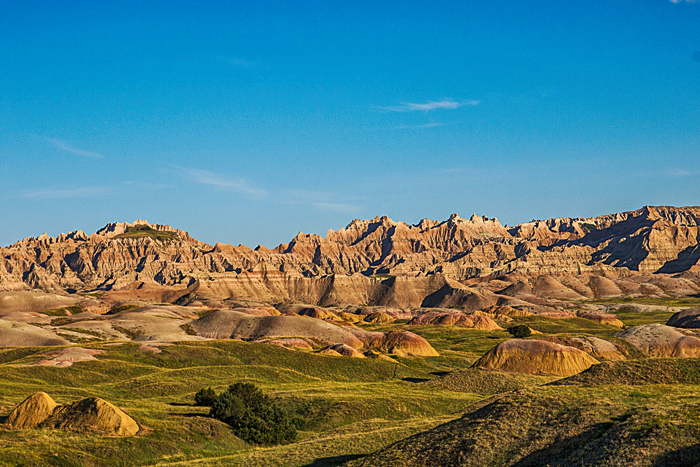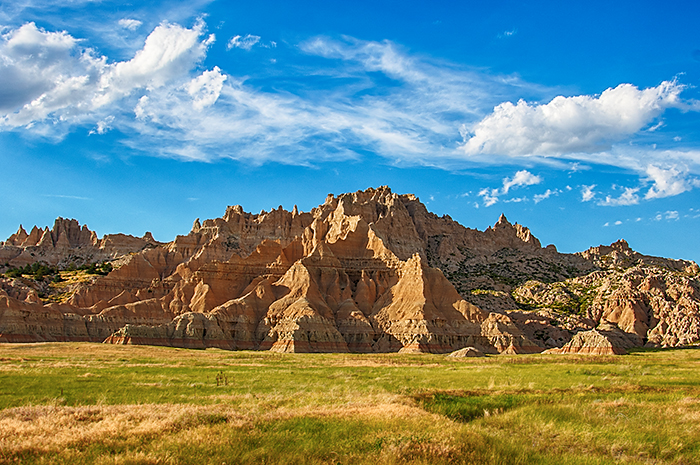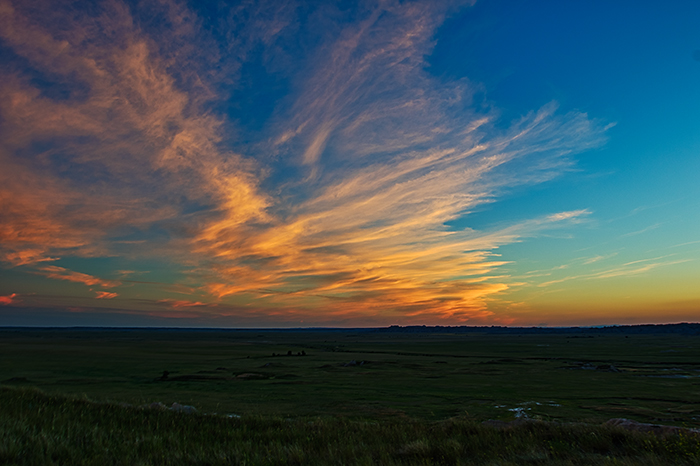Summer Is Here
Today is the first day of summer, and the temperatures made it clear that summer was upon us. When we returned from our morning explorations, it was 96 degrees in the motorhome.
Most of the northern section of Badlands National Park follows a loop road that goes 50 miles from the campground at the southeast corner of the park to the Sage Creek area at the northeast edge of the park. The first 24 miles of the road is a mixture of badlands topography interspersed with open prairie and wildlife. The 26 miles in the Sage Creek area is mostly known for its wildlife; especially bison and prairie dogs.
This morning we shot briefly in the Norbeck Pass area before exploring the Yellow Mounds area.
From the Yellow Mounds area, we drove to the Sage Creek section of the road. When we reached Roberts Prairie Dog Town, it was the giant bison using the poles outlining the parking area that drew our attention and not the prairie dogs. The huge bull obviously had been here before because he knew just which poles to use to scratch his underbelly or his neck or his head.
We found the main herd of bison sprawled across the open prairie near the Sage Creek Basin Overlook. One giant bull was especially entertaining as he took his morning "dust bath." A 2500 pound bull rolling in the dust with all four feet in the air is a very strange sight.
When we reached Sage Creek Road, we left the park and looped back toward the Pinnacles Entrance and the burrowing owls. Morning light is much better to photograph the family closest to the road. The owls cooperated by congregating at the mouth of the burrow. We had no problem getting four of the five owls into a single shot. In between shooting the owls, we also shot families of prairie dogs (it was after all a prairie dog colony where the owls were "borrowing" a hole), two pronghorn and a bison on a grassy hill, and a pronghorn mother with her very young baby.
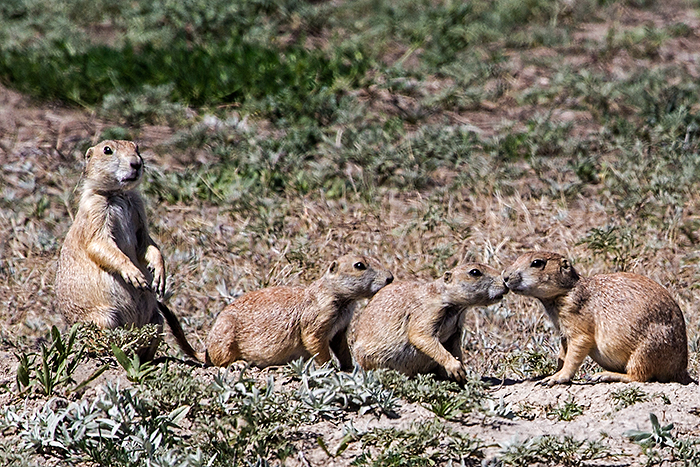 |
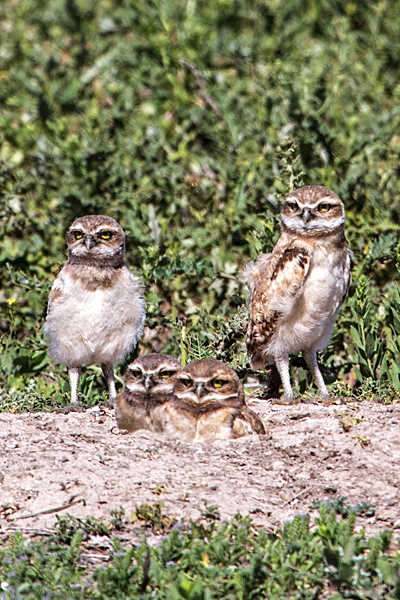 |
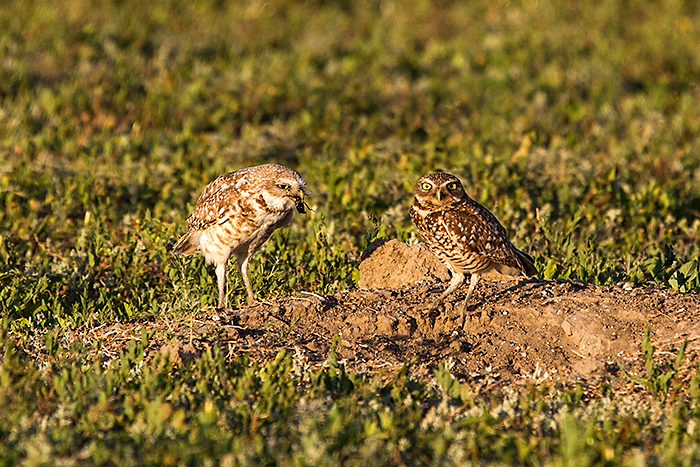 |
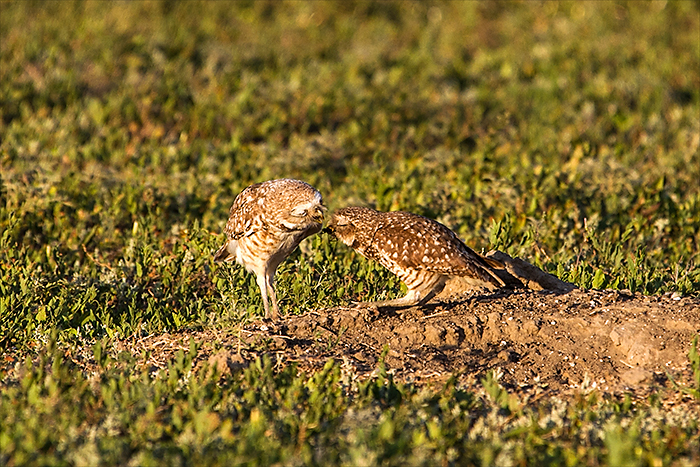 |
After shooting owls and prairie dogs for 90 minutes, we drove back to camp. We opened the motorhome door to a blast furnace. It was 96 degrees in the motorhome. It was getting hot when we were out shooting, but there was a slight breeze, and it wasn't terribly uncomfortable. It was miserably hot in camp. We cranked up the A/C and did the best we could to stay cool.
After it cooled down ("cooled down" being a relative term), we went out looking for landscape shots. The main formations in the Badlands are morning shots, but every morning has either been absolutely blue sky with no warm light or overcast. Like most of the rest of the trip, we've gotten lots of good wildlife shots, but not much for landscapes. We took some shots in the formations near camp and then drove up to Norbeck Pass. There were a few clouds at Norbeck Pass to add interest, but the lighting lacked the warmth we usually associate with the "golden hours."
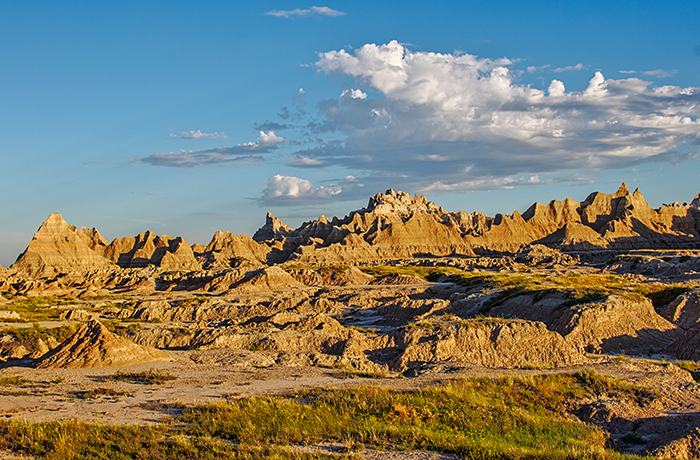 |
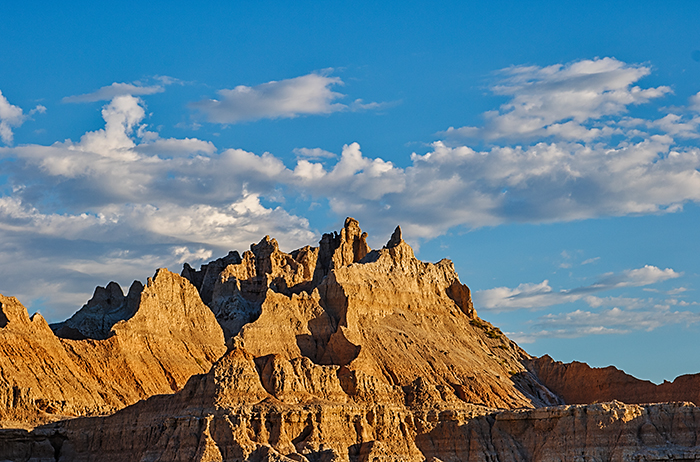 |
When we arrived at Quinn Road to photograph my favorite prairie dogs, I noticed an owl taking off in the distance. When I tracked back where it had come from, I discovered a family of eight burrowing owls. It's too bad they were so far away.
I finished by shooting video clips of the prairie dogs doing their "pop-up" behavior. At random, the members of a colony of prairie dogs will raise up on their hind legs and make a "whistle sound." I really don't know how to describe it. Generally, a member of the colony will start the pop-up dance and then it will progress through the colony. If an entire family is close together, they may all pop up at the same time. It's fun to watch, but very hard to photograph because you never know which prairie dogs will pop up and in what order. You never know where to look; let alone aim the camera.
When it got too dark to shoot prairie dogs, we drove to Conata Basin Overlook to photograph the clouds over the badlands. It was the closest thing we've gotten to a sunset here.


